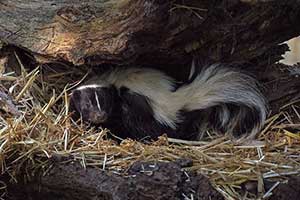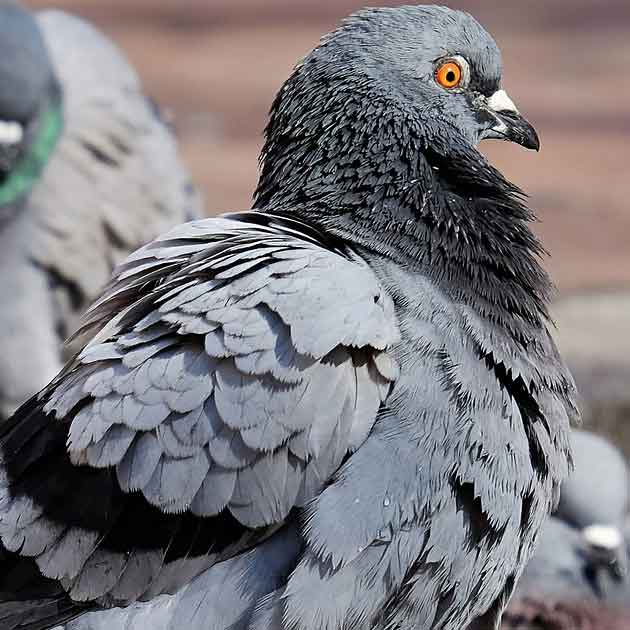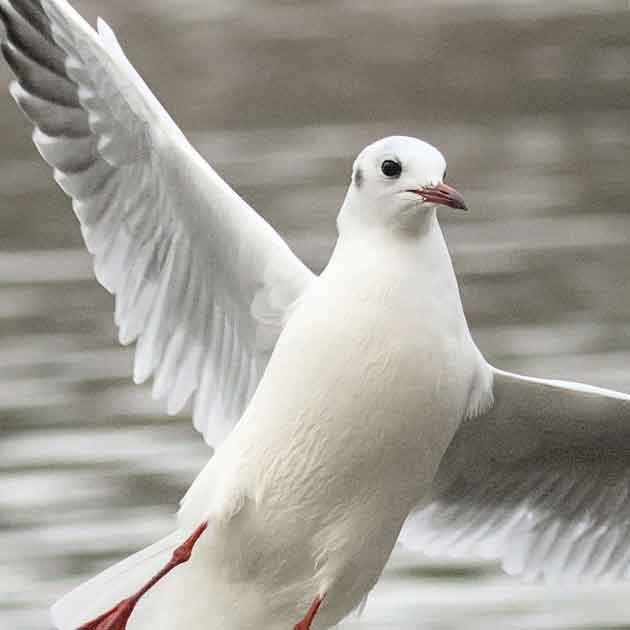 While there may be no end in sight yet for winter, one native pest animal species is getting ready for spring and mating season right now – yes, the skunk. Love is in the air! Well, actually, that unmistakable aroma in the air generally means that a female skunk was less than impressed with her love struck suitor and rejected him by releasing “that smell”. Thankfully, skunk mating season along with its pungent whiff is short.
While there may be no end in sight yet for winter, one native pest animal species is getting ready for spring and mating season right now – yes, the skunk. Love is in the air! Well, actually, that unmistakable aroma in the air generally means that a female skunk was less than impressed with her love struck suitor and rejected him by releasing “that smell”. Thankfully, skunk mating season along with its pungent whiff is short.
Skunks are becoming more active during the months of February and March – out looking for that perfect mating partner. You might think skunks nocturnal but, it is actually not that uncommon to see skunks out ‘n about during the daytime. If there is food to be had, if their usual daytime snooze spot is disturbed, and definitely if there are babies… you’ll likely cross paths with a skunk or two. Hopefully, you don’t see them lifeless by the side of the road; unfortunately, many skunks end up struck and killed by vehicles.
Of course, during this time of year skunks are not only looking for a suitable partner, but also for a safe and protected den to have and raise their offspring. They are skilled and diligent diggers, and like to make their dens in holes underground and/or under structures. Hopefully, you inspected your home and yard last summer or fall and made repairs where necessary to prevent nuisance wildlife from getting under your deck or porch. You may have installed an underground ¼” wire mesh to prevent skunks from getting under.
Even if you did all that, it’s still a good idea to have a close look again right now – just to make sure there are no new access points. If you do find any, make repairs where you can but, of course, exclusion methods such as the mesh wire are impossible to implement in the middle of February – at least, here, in Ontario.
What attracts skunks and whatshould you avoid doing to deter skunks?
Of course, you’ll want to make sure your garbage bins are well secured and there are no other food sources readily available. And, as much as we all love watching the traffic to and from our bird feeders… bird seed will also attract skunks (and squirrels). So will the presence of smaller birds and their nests (eggs). If you can, avoid feeding your pets outside and store your pet feed indoors.
But what do you do, if despite your best efforts you find yourself hosting a skunk or five?
How do you get your skunk(s) to leave?
- You can employ what is called “Humane Harassment”. This entails making a perfectly dark and quiet spot... well, not so dark and quiet. Install bright lights at the entrance and point them into the dwelling, play the radio at high volume (talk radio – they aren’t fond of human voices), and place rags soaked with apple cider vinegar or ammonia (bleach) by the entrance. In other words, turn their 5 star all inclusive into the youth hostel from hell. You’ll need to keep this up for at least 3 days and nights – patience and persistence is key. Chances are that momma skunk (wishing to be, expecting, or having a litter already) will move herself and any wee ones to a place more suitable for child rearing.
Speaking of babies… here’s what you should know: After a sixty day gestation period, female skunks give birth to a litter of pups in April or May. Older females come into estrus earlier in the season than younger females and, therefore, have their litters earlier in the spring. Older females also tend to have larger litters. Typically a litter consists of four to seven babies (although, as many as nine have been recorded). One male may mate with several females and won’t stick around after. After mating, female skunks leave their winter den in search of the perfect maternal den. Interestingly, mothers and their offspring sometimes live in communal dens.
The young are blind and deaf at birth with short, fine fur. Momma skunk nurses the little ones for about six weeks before introducing them to the world outside their den. By this time, the babies are miniature replicas of momma skunk. The young are weaned by about two months of age. The family group breaks up in the fall and the young’uns move off to college. Just kidding… they find their own territory. They may travel about six to ten km in search of a new home; however, extremes of up to fifty km have been noted.
- You can try a ‘repellent’ – such as used cat litter. It simulates a predator in the area and momma skunk may decide to pitch her tent elsewhere. As a side note: Please try to avoid commercial repellents based on predator urine - these products are created under very inhumane conditions. Additionally, they really provide no better success rates than home remedies (such as the kitty litter).
- One way doors work great – if there are no babies. Please, please, be sure there are no babies. If you prevent momma skunk from caring for her little ones, you are condemning them to a horrific death.
- Trapping works well – if there are no babies. You’ll also need to remember that animals may not be relocated farther than 1km from where they were captured. This is a job for the professionals. Call Hawkeye at 416-529.5393 – we’re here to help. We have very specific licenses and permits that enable us to offer you options other pest animal control companies simply cannot.
- You can decide to do nothing at all. Skunks typically stay in their dens for fairly short periods. Skunk babies are grown and ready to strike out on their own by the end of summer. If you can stand it that long, you can then close off any access points to prevent other animals from using the den in the future.
So, aside from the “aroma” – are there other reasons you wouldn’t want a skunk hanging around?
Are skunks dangerous?
- Skunks are mostly regarded as just a pest and generally pretty docile but they do carry a strain of rabies that can potentially affect pets and even humans. Rabies can be transmitted through saliva (a bite) before the infected animal shows any symptoms (generally abnormal behavior, such as overly active during the day, uncharacteristically aggressive or lethargic, vocalization, stumbling, seizing, etc. ). Several things should be done immediately if a person is bitten by a wild animal or a domestic animal that has not been vaccinated against rabies. First, wash the wound with soap and water and continue flushing the wound with water for five minutes. Then get medical attention immediately. Humans who have contracted rabies may first develop symptoms of pain, tingling, or itching shooting from the bite site (or site of virus entry) and gradually will become extremely ill, developing a variety of symptoms, including high fever, confusion, agitation, and eventually seizures and coma. Once the symptoms appear in humans, there is NO cure or treatment and death occurs in almost 100% of the cases. Learn more about Rabies »
- They get into pet or livestock feed in barns, sheds, or garages. They steal eggs and can potentially harm chickens and other smaller birds and poultry, such as quail.
- The avid gardener will have cursed skunks more than once. They like to dig up bulbs and flowers. They’ll also dig up the lawn for grubs.
- Still in the garden… any low hanging or otherwise accessible fruit is fair game for skunks. The same goes for vegetables.
- Let’s get back to “that smell”… de-skunking your dog or cat is not a whole lot of fun. Not for you, or your pet. There are a number of recipes out there but, our most trusted and recommended remedy is this: 1 quart of 3 percent hydrogen peroxide (fresh bottle), ¼ cup of baking soda (sodium bicarbonate), and 1-2 teaspoons of liquid dish soap. Rinse and repeat. Then, rinse and repeat again.
Incidentally, one of our employees recalls this story:
“Our black and white cat Twinkie was a bit of a roamer and would often disappear for a day or two. At the end of one of his little excursions we encountered him on the road while driving back from town. Only, there were two of them. One was clearly our cat, the other one kinda looked like an upside-down Twinkie. Turned out, that one was a skunk. Somehow, they had struck up a friendship and the two of them could be seen together quite regularly. Fast forward a couple of months… our super friendly dog (not an ounce of killer instinct – his only kill might have been a fly he accidentally sat on) spotted something black and white across the front lawn and sprinted towards it with great enthusiasm. He surely thought it was the cat. Can you tell where this is going? Yeah, it wasn’t Twinkie. It took 3 washes that evening to get him fit for indoor admission. And another one the next day.”
Is there an upside to having skunks around? Are skunks good for anything?
Indeed, skunks are not entirely useless. They do devour insects such as grasshoppers and beetles plus a variety of insect larvae. They also eat small mammals such as mice or voles. Additionally, they are scavengers – feeding on decaying fish, animals, and other organic matter. They are part of nature’s clean-up crew, if you will.
Why Hawkeye?
We GUARANTEE results. We offer PERMANENT solutions above and beyond what other companies can offer. Hawkeye is the ONLY pest bird and animal/wildlife control company in Canada designated "Certified Wildlife Control Professional" AND holding the following licenses:
- Trapping of Fur Bearing Animals Permit: In contrast to all other companies, we can euthanize the bird or fur-bearing animal, thus guaranteeing it will not return.
- Falconry Permit: We use Birds of Prey (hawks, owls, falcons, eagles) to scare, chase, or remove in a natural and humane way.
- Pest ControlLicense: We can employ chemical solutions to certain problems. These methods include natural pesticides.
Now with 7 Locations ( 6 In Canada and 1 in the U.S), we are ready to serve you better in Acton, Toronto, Oshawa, Bowmanville, two locations in Mississauga and West Palm Beach in Florida.
Contact us today or email us at [email protected] if you need help with pest wildlife/animal control and/or pest animal removal.
Pest wildlife animals like Bats, Bears (Black, Brown), Beavers, Bobcats, Cats - Domestic (Feline), Chipmunks, Coyotes, Deer, Elk, Fox, Groundhog, Marten, Mink, Moose, Muskrat, Porcupine, Possum/Opossum, Rabbits, Raccoons, Skunks, Squirrels (Black, Grey, Red) and Lynx
Related Articles:
https://www.hawkeye.ca/blog/how-to-get-rid-of-skunks-in-a-window-well














